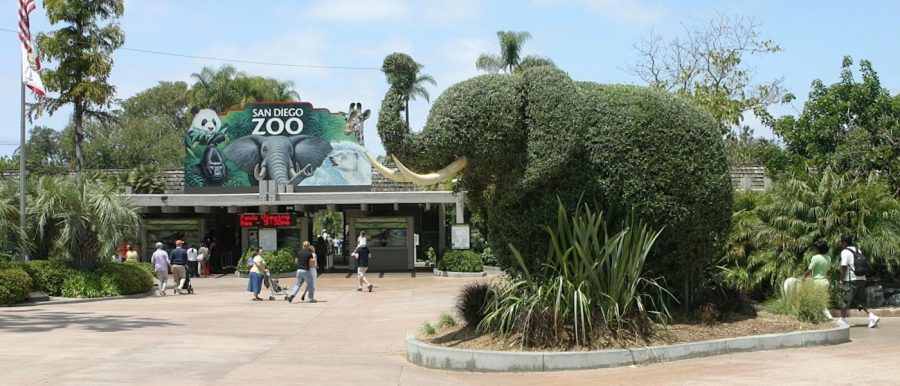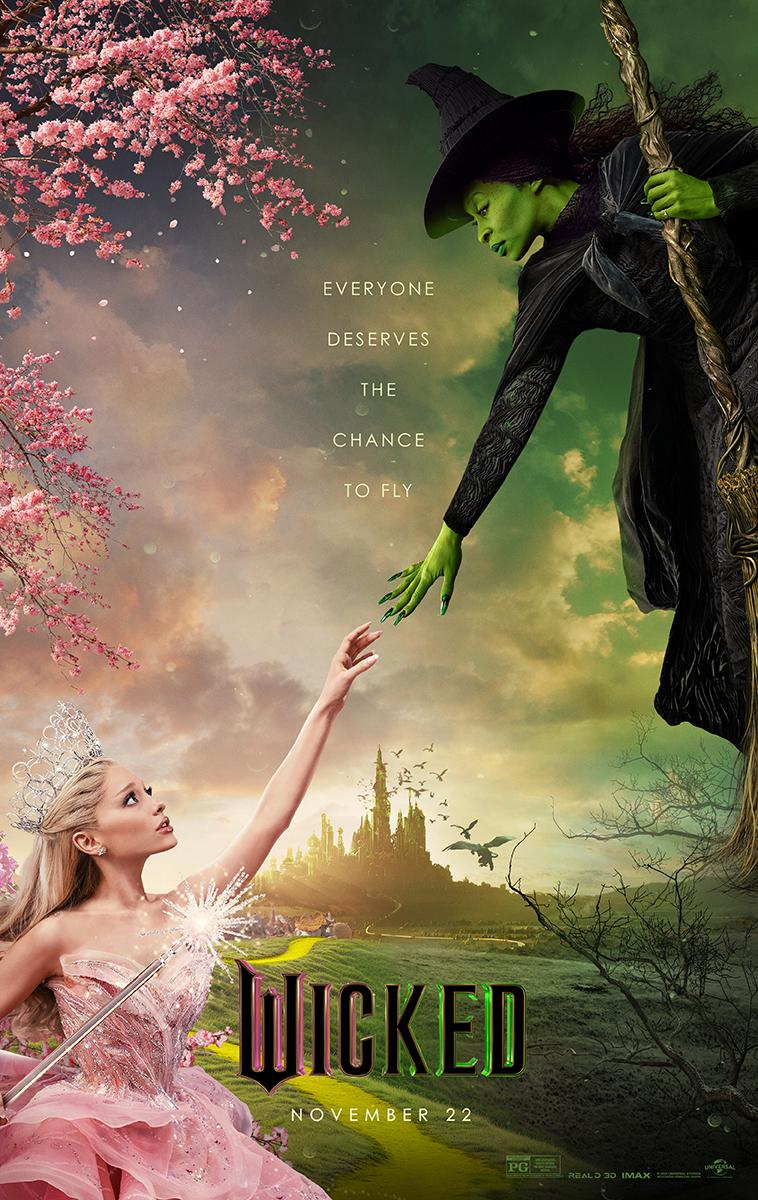PRO-ZOO: EMILY FULLER
We all have that memory of our first trip to the zoo, seeing the animals we only read about and saw in our picture books.
After my first trip to the zoo, when I thought of a lion, I no longer imagined the cowardly lion from Wizard of Oz. I pictured a strong, magnificent animal pacing back and forth in protection of her cubs. I no longer saw a monkey as one from Dora, Curious George or Madagascar, but I clearly remembered the one from the Dallas Zoo, jumping from vine to vine with excitement.
When we are young we were all curious about animals and Zoos do not only fulfill our excitement about animals, they inform us about them too.
Without zoos, most people living in cities will not see a wild animal beyond a squirrel, bunny or pigeon, let alone a lion or giraffe. Seeing a living creature and absorbing the details, smells and sounds of them does not compare to watching it on TV or seeing pictures. Zoos bring a greater understanding and perspective to many and give people a greater appreciation for wildlife conservations efforts.
In 2014 the World Association of Zoos and Aquariums said that 700 million people visited zoos worldwide. Zoos are living museums that allow the public to learn about wild animals and they educate the public about animals to pique interest so they can become more environmentally conscious and learn how to aid animals in the wild.
With all the ongoing threats to the environment, zoos are more essential than ever to the long-term survival of many species. With the fur and ivory industry hunting animals from the wild, zoos can act as a safe haven for many species.
Without the entity of zoos, species considered extinct in the wild would not have the population reserve that zoos provide. Being a safe environment, zoos allow species to be bred up and reintroduced into the wild. This reservoir population protects against a population crash or extinction in the wild.
Zoos are often blamed for being slow to reintroduce species; however, unless the reason they go extinct is resolved, they cannot be reintroduced into the wild. This problem lies beyond the control of zoos.
Zoos do not only raise donations for wildlife funds, but they study animals in a safe environment so that we better know how to protect them in the wild.
Providing a knowledge base that helps with the increasing threats of habitat destruction, zoos help scientists learn about how to aid them in the wild because knowing how species live, act and react help us understand how to restore and repair their ecosystems and save the species.
The care of animals has been a concern of zoo skeptics for decades; however, activists have insured that the livelihood of a zoo relies on the livelihood of their animals. In the past zoos that mistreat their animals had been targeted for their actions, damaging their reputation and threatening their business; therefore, animal care in zoos in continually improving.
Today, Zookeepers engage in activities to prevent boredom or mental deterioration in the animals. Zoos have moved away from steel-bar enclosures and cold cement cages; they now work to simulate their natural habitats.
Although some see zoos as unfair to the animals, they create a widespread appreciation for animals is our society that would not be there otherwise. We can see them on tv, in a book or in a movie, but being able to get up close to them, or even touch them, simply does not compare.
ANTI-ZOO: ALI HURST
Let’s be real, zoos, petting zoos and everything in between are very fun. You get to be up close and personal with creatures you will never see in real life, and you can learn firsthand about the incredible life forms with which we share our planet. Plus, those monkey stuffed animals with the velcro hands and a tiny tee-shirts are amazing.
As a young child, I adored going to the zoo. Seeing exotic animals up close was incomparable for an animal fanatic like me. I loved being able to observe the animal kingdom, from tigers and lions to wild hogs and meerkats, through only a thin piece of plexiglass. When I was younger I loved zoos because I love animals. Now, at 17, I detest zoos for the exact same reason.
Yes, zoos promote appreciation for creatures that the average person may never see in real life, but at what cost?
The reason that we do not come across these magnificent life forms in our daily life is that their natural habitats, the areas that they thrive in, are vast and removed from human civilization. We know this, and yet we continue to take these animals from their homes and plop them in a minuscule enclosure in climates and altitudes that they are not accustomed to. You would not like to be forcibly removed from your environment and moved across the globe, so why is it okay for us to do this to animals?
My favorite zoo as a child was the Cheyenne Mountain Zoo in Colorado Springs, Colorado. My favorite part of this zoo experience was feeding the giraffes lettuce. When I was younger, I thought nothing negative of this activity, and I even believed that the giraffes lived a good, natural life in Colorado Springs. Just this year, however, I realized that perhaps squeezing seven giraffes in an area the size of a large swimming pool was not ideal. Furthermore, giraffes live in the African savanna, an area with an altitude below 500 feet. Cheyenne Mountain Zoo is at 6,800 feet above sea level. These habitats are not interchangeable; giraffes are not supposed to live in Colorado.
Of course, one cannot argue against zoos without mentioning the name that lingers in everybody’s minds: Harambe. In case you missed the meme fest, Harambe was a beautiful silverback gorilla who unfortunately was shot when a child climbed into his cage at the Cincinnati Zoo. All gorillas are considered endangered or even critically endangered, and the dwindling number of the species was further lessened as a result of such a trivial mistake.
It is not fair to say that Harambe should not have been shot; a small child’s life was at stake. It is fair, however, to criticize zoos in general for causing this tragic death of an already endangered species.
Believe it or not, all animals are not supposed to intermingle. While exotic animals are endlessly fascinating, it is because of incidents like this that humans and gorillas do not hang out. Gorillas are animals. They can be aggressive, and they are incredibly strong. Harambe, and any other captive animal that has lashed out at a human, was not cruel or evil, he was just following his instinct. If somebody came into your home unannounced, you might do something about it too.
Humans had already stolen Harambe away from his family and his home and put him in a small cage, and then they killed him for following his animalistic instinct.
Recently, another controversial animal passed away: Tilikum. Tilikum was the orca at SeaWorld that attacked several trainers in the span of his captive life. The Netflix documentary “Blackfish” thoroughly covers the problematic and harmful effects of captivity on these beautiful creatures.
Zoos are entertaining, yes, but animals do not live to entertain. They are life forms to be respected, and observed from afar. I understand the desire to be up close and personal with these intriguing life forms, and I implore you to try other methods of studying them, such as watching Animal Planet, or the new PBS documentary, “Spy in the Wild”. Both of these resources provide more information than can be gathered at any zoo, and they allow the animals on the screen to remain comfortably in their natural habitats.
Commentaries are the expressed opinion of the author and do not necessarily reflect that of The Fourcast staff, its adviser or any member of the Hockaday community.
– Emily Fuller – Castoff Editor – Ali Hurst – Asst. Castoff Editor –











